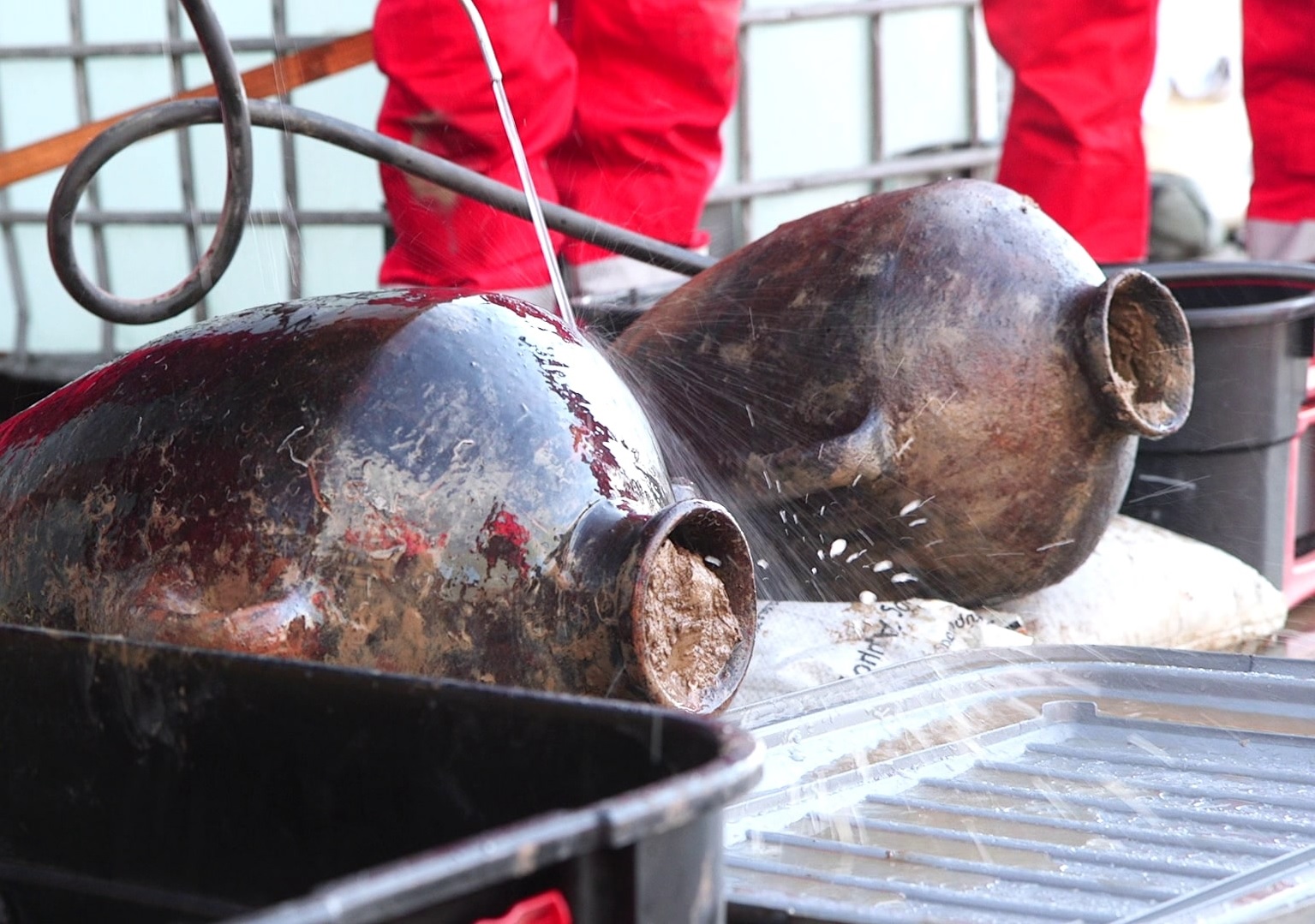Archaeologists from the Israel Antiquities Authority Marine Unit have discovered a 3,400-year-old shipwreck with the cargo mostly intact.
The site was first identified during an underwater survey by Energean, an energy company searching for natural gas deposits beneath the Mediterranean Sea Floor.
This led to the discovery of the shipwreck and its cargo at a depth of 1.8 kilometers, along with its cargo that consists of Late Bronze Age Canaanite storage vessels.
IAA archaeologists, in collaboration with Energean, have used the deep sea exploratory vessel, “Energean Star” to conduct a visual inspection of the wreck site. This has revealed hundreds of ceramic vessels on the seabed, and a muddy layer which likely conceals a second layer and the wooden beams of the ship.
Jacob Sharvit, Head of the Israel Antiquities Authority Marine Unit, explains, “The ship seems to have sunk in crisis, either due to a storm or to an attempted piracy attack – a well-known occurrence in the Late Bronze Age. This is both the first and the oldest ship found in the Eastern Mediterranean deep sea, ninety kilometres from the nearest shore.”

Only two other ships from this period have been found – the boat from Cape Gelidonya and the Uluburun boat; both found off the Turkish coast. Both ships were found near the shore, suggesting that shipping routes followed the coastline between ports. However, this new discovery changes the understanding of ancient marine trade, demonstrating that ancient shipping also extended into deep waters.
“The ship is preserved at such a great depth that time has frozen since the moment of disaster – its body and contexts have not been disturbed by human hand (divers, fishermen, etc.); nor affected by waves and currents which do impact shipwrecks in shallower waters,” added Sharvit.
Header Image Credit : IAA
Sources : Israel Antiquities Authority





